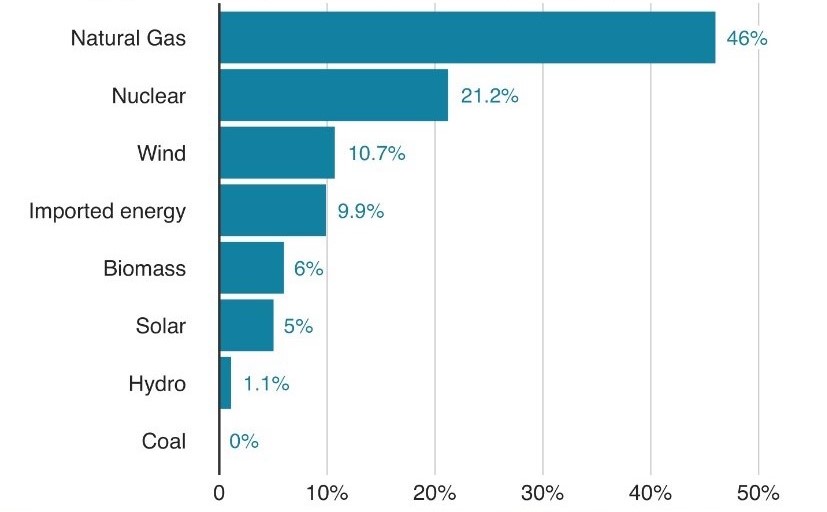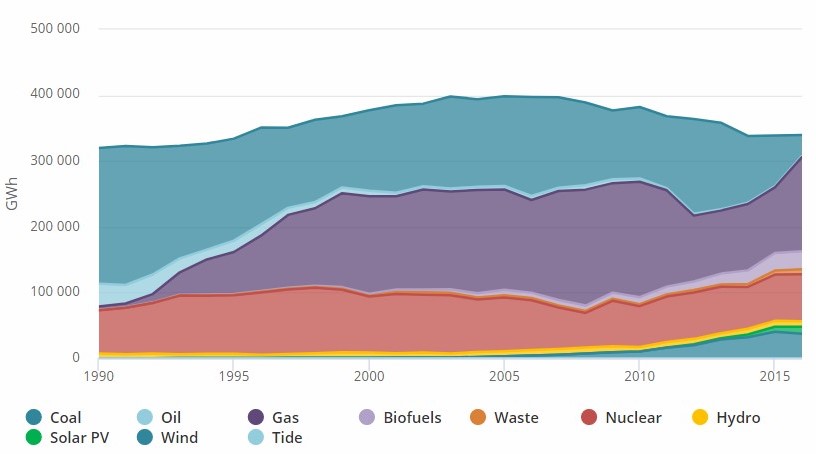In the United Kingdom it was achieved the first coal-free week since 1882 (when a coal-fired plant was commissioned in Holborn London) and this came just two years after the first coal-free day since the Industrial Revolution. The coal-free week was the one between 13:24 of the 1st of May and the same time on the 8th May 2019.
National Grid Electricity System Operator (ESO) declared that having prolonged coal-free periods will become the “new norm” as the share of renewable energy will increase in the future. The United Kingdom announced that it will shut down all the coal-fired plants by 2025 (similarly to what the Italian Government confirmed in the draft proposal of the National Energy and Climate Plan).
National Grid ESO plans to have the systems and software in place by 2025 to be able to handle energy generated from non-programable renewables (wind and solar particularly) and to eliminate the contribution from coal-fired plants.
Share of the generation mix in the coal-free week in May 2019 in the United Kingdom
Source: National Grid ESO

In 1990, the total electrical energy production was over 300,000 GWh, of which 65,749 GWh from nuclear, according to the IEA. The electrical energy production by coal went from 206,438 GWh in the 1990 to 31,481 GWh in 2016 (hence it decreased by 6.6 times). In the 90s a significant growth of the gas capacity was achieved (also supported by the gas from the North Sea). Starting from 2004, a significant growth of the renewable energy production was observed, with wind energy being the primary renewable source in the UK with 37,367 GWh in 2016.
Evolution of the electrical energy by source in the United Kingdom (1990-2016)
Source: IEA

Further details are available here: link

